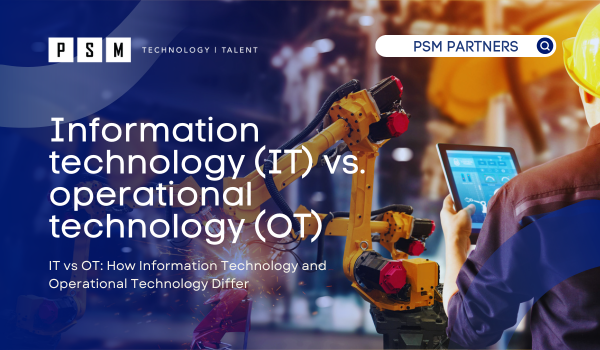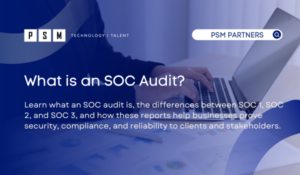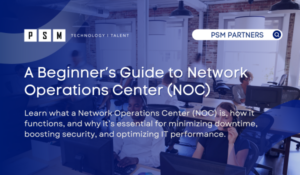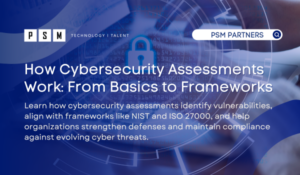Table of Contents
ToggleWith technology advancing at a rapid pace, the terms Information technology (IT) and Operational Technology (OT) have become increasingly common to hear from within certain companies. The integration of information technology systems with operational technology systems has allowed companies to be able to streamline their processes and gather vast amounts of data that can be analyzed to improve their efficiency. This integration is known as IT/OT convergence, which refers to the seamless combination of these two types of technology to optimize industrial processes and improve overall efficiency. The merging of IT and OT allows organizations to monitor and manage operational technology in real-time, making more informed decisions and allowing for more effective resource allocation. With the ability to extract valuable insights and analytics from the data produced by operational technology systems, companies can make impactful choices that help them stay ahead of the curve and achieve greater levels of success.
What is Information Technology
Information Technology (IT) plays a vital role in areas such as cybersecurity, data analytics, software development, and cloud computing. IT has modernized the way we store, process, and exchange data. With the help of computers, storage devices, and networking infrastructure, IT has made it possible for us to handle substantial amounts of data with unprecedented ease. Additionally, the advantages of IT make data easily accessible, reduce the chances of data loss and increase productivity. Additionally, IT has enabled us to automate various processes, thereby reducing the need for manual intervention, thus improving efficiency and accuracy. With the ever-increasing reliance on technology, IT has become an integral part of everyday life that we simply cannot live without.
A core purpose of IT is to ensure that all data is managed, processed, and stored securely. With cyber-attacks becoming more frequent and sophisticated, it is essential to have a dedicated team of security analysts working to identify and mitigate potential risks. From firewalls to encryption, IT plays a crucial role in ensuring data is always secure. All businesses, no matter the size, need IT support to keep their networks and systems safe.
What is Operational Technology
Operational Technology (OT) is utilized in verticals like manufacturing, energy, transportation, and utilities. OT is focused on the hardware and software used to control and automate physical processes such as machining or manufacturing. The specialized technological system involves supervisory control and data acquisition (SCADA) systems, industrial control systems (ICS), programmable logic controllers (PLCs), and other equipment that is designed to automate and optimize the production process. With these technologies in place, businesses can minimize redundancies, reduce the potential for human error, and increase efficiency.
OT is an important aspect of physical world management. One of the key concerns for OT is downtime, which refers to the interruption of production, both planned and unplanned. Unplanned downtime can be a major expense for businesses, making it a priority for OT to prevent it from happening as much as possible. To achieve this goal, OT can implement an industrial control system such as SCADA. SCADA technology allows for remote monitoring and control of industrial processes, making it a valuable tool for avoiding unplanned downtime and ensuring that production runs smoothly. With SCADA and other tools at their disposal, OT professionals can help to minimize the risk of downtime and drive productivity in their industries.
Differences between IT and OT
Now you might be wondering how IT and OT differ. Understanding the differences between IT and OT is essential to effectively manage and utilize both domains within a business. Let us break down the differences:
- Focus: Information Technology focuses on managing and processing digital information, supporting business operations, and facilitating communication within an organization. However Operational Technology, on the other hand, is concerned with controlling and optimizing physical processes in industrial environments. Moreover, IT operates in office environments with standard network infrastructures. While OT operates in harsh industrial environments with specific protocols and requirements.
- Time Sensitivity: Operational Technology requires real-time response and low-latency communication due to its impact on physical processes. Timely monitoring, control, and optimization of physical processes are essential to ensure efficient and safe industrial operations. On the other hand, Information Technology typically has more flexible response time requirements. It is worth noting that with the increasing interconnectivity between OT and IT systems in modern industries (often referred to as the convergence of IT and OT), the time sensitivity of IT can be influenced by the real-time requirements of OT. In these cases, the performance and responsiveness of IT systems become crucial to support the time-sensitive operations of OT systems.
- Systems: Both Information Technology systems and Operational Technology systems rely on network infrastructure to transmit and receive data, although they have different protocols and security requirements. IT involves systems such as servers, databases, networking equipment, software applications, cybersecurity. Whereas OT involves systems like supervisory control and data acquisition (SCADA) systems, programmable logic controllers (PLCs), industrial control systems (ICS), sensors, actuators, and specialized industrial equipment. The integration of IT and OT systems has become essential to optimize operational efficiency, improve decision-making, and enable advanced analytics.
- Integration: The integration of IT and OT systems has become vital to optimize operational efficiency, improve decision-making, and enable advanced analytics. Integrating IT and OT can lead to numerous benefits, including operational efficiency & Data driven insights. By connecting IT and OT systems, organizations can streamline processes, automate workflows, and reduce manual intervention, leading to improved efficiency and productivity. Moreover, combining IT and OT data provides a holistic view of operations, enabling organizations to gain valuable insights for decision-making, predictive maintenance, and optimization.
- Security: In today’s digital age, the importance of cybersecurity cannot be overstated. IT and OT each have their own unique focus when it comes to security. IT is primarily concerned with safeguarding sensitive information, while OT is focused on protecting physical infrastructure and assets from cyber threats. By integrating these domains, both sensitive information and critical infrastructure can be protected from potential cyber-attacks. The importance of this integration cannot be ignored, as successful cyber-attacks can have devastating consequences not only for businesses but also for individuals.
Find out how Microsoft is approaching cyber security for Industry 4.0 using Azure Defender for IoT (Internet of Things).
How IT and OT Converge
The intersection of IT and OT, commonly referred to as IT/OT convergence, has become an increasingly popular topic in recent years. One of the main advantages of IT/OT convergence is that it offers a lower chance of downtime with OT systems. As downtime can be a costly problem for businesses, this is an appealing benefit for those in the OT field. For example, SCADA systems are crucial for large operations, as they combine OT and IT principles to solve many issues. IT security analysts are often hesitant to converge their systems with OT due to potential security risks. As a result, discussions surrounding IT/OT convergence continue as businesses weigh the pros and cons of this developing trend
How You Can Implement IT/OT Together
Being able to combine the automation of data from the IT infrastructure side with the process and workflow-driven OT side of technology provides unparalleled ease of use. Depending on the industry that your organization operates in, the implementation of IT/OT convergent systems will vary depending on local / state / federal regulations.
If you are interested in diving into learning more about these systems, speak with experts, like PSM Partners to learn more and discuss implementing these systems in your environment.
How Can PSM Help
At PSM, we provide managed IT services for utilities to help maintain IT systems and implement strategies to help improve the efficiency of the system. We will assess your current IT situation and create a plan that accommodates your specific needs. We can help oversee the operation of your IT system with 24/7/365 monitoring and find and fix issues before they lead to major problems. Our professionals will identify ways in which we can upgrade and improve your system in addition to providing basic maintenance. We will also implement security measures to protect your system from incidents and crashes. Another aspect of our managed IT services is ensuring that your electronic data is stored safely and efficiently. With our cloud services, we will assess your current data storage situation and help you find ways to make your storage more efficient and cost-effective. We can implement cloud-based, on-premises, or hybrid storage solutions and migrate your data to a cloud.
To learn more, call PSM at (312) 940-7830 or fill out a contact form.
Related Insights
What is an SOC Audit?
If your organization handles sensitive data or provides services to...
Read MoreA Beginner’s Guide to Network Operations Center (NOC)
Businesses and organizations rely heavily on complex IT infrastructures to...
Read MoreHow Cybersecurity Assessments Work: From Basics to Frameworks
Cybersecurity threats are becoming more sophisticated and widespread, putting sensitive...
Read MoreFuture-Proof Your Technology: Why You Should Consider a Computer Upgrade Every 3 Years
Key Takeaways Three-Year Upgrade Cycle Is Ideal Upgrading business computers...
Read MoreAbout the Author

Taylor Friend
I am a dynamic and results-focused Marketing Coordinator at PSM Partners, recognized for my unwavering motivation, meticulous attention to detail, and unwavering commitment to achieving business objectives. Throughout my time at PSM, I have demonstrated remarkable expertise as the primary liaison for Microsoft and NetDocuments, rapidly establishing myself as a proficient point of contact. Additionally, by harnessing my inherent organizational skills, I have effectively elevated the quality of both our internal and external events.





